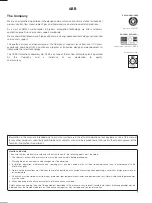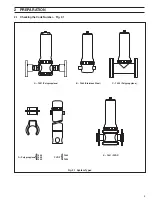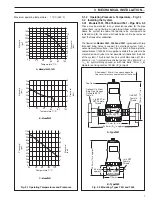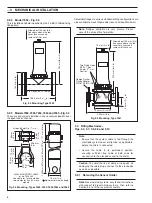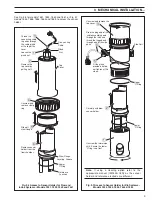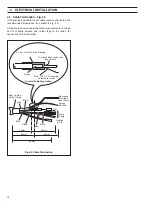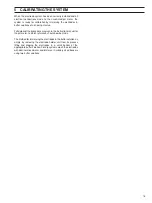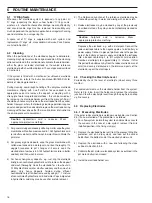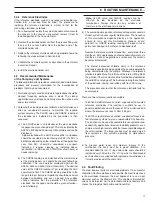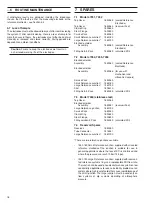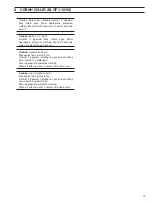
10
…3
MECHANICAL INSTALLATION
Reference
Junction
Temperature
Compensator
(Blue Ring)
Reference
Electrode
(Black Ring)
Measuring
Electrode
(Red Ring)
ASEA
BROWN BOVERI
K
e
REFERENCE ELECTRODE
K
e
n
t -T
a
y
lo
r
ASEA
BROWN BOVERI
K
e
n
t -
ASEA
BROWN BOVERI
Ensure 'O' ring
is fitted
Insert into
Sensor Holder
Tighten fully
Repeat steps
1
,
2
and
3
for
each electrode
3
4
1
2
3.3.2
Fitting the Reference Electrode – Figs. 3.8
a) Remove the reference electrode 1730-000 from its box; the
box should also contain a bottle of KCl solution (slurry).
Caution.
Wear eye protection when filling the
reference electrode with KCl solution (slurry).
b) Shake the bottle of KCl solution well to ensure it is mixed
thoroughly so that the solids are freely dispersed in the
solution.
c) Slowly fill the reference chamber with solution through the
filling hole (see Fig. 3.8a) . Fill in small quantities and shake the
bottle frequently to keep the KCL in suspension (the contents
of one bottle should fill the reference chamber and allow for
displacement when the reference electrode is fitted).
d) Wipe dry the area around the filling hole.
e) Fit the reference electrode
IMMEDIATELY
ensuring that the
‘O’ ring is fitted over the electrode – see Fig. 3.9.
Note.
To ensure correct fitting of the electrode, it may
be necessary to clear a path through the slurry in the
chamber. Do this using the reference electrode gently
in an up-and-down motion to clear a path.
f)
When a path has been cleared, position the electrode and
screw down firmly to ensure a good seal.
g) Shake the sensor holder to ensure that the KCl slurry reaches
the bottom of the chamber.
h) Invert the sensor holder and remove the reference
junction (Fig. 3.8). Check the level of the slurry; top up if
necessary. Refit reference junction.
There are two reference junctions available:
•
1360 180 Small Reference Junction: supplied with all sealed
reference electrodes. The junction is suitable for use in
general applications where the loss of KCl is minimised and
where the pressure can reach 10bar (145 psi).
•
1360 190 Large Reference Junction: supplied with reservoir-
fed reference systems to give a reproducible KCl flow rate.
The junction can be used on sealed reference system on low
conductivity applications to reduce instability problems or on
sample where high level of solids that cause rapid blockage of
the small junction. The large junction must be used only on
flow systems or dip systems operating at atmospheric
pressure.
3.3.3
Fitting the Measuring Electrode, and
the Temperature Compensator 1750-000 (if required)
– Figs. 3.9 and 3.10
Note.
If a temperature compensator is not fitted,
ensure the blanking plug (Fig. 3.10) is fitted (Redox).
a) Remove the temperature compensator (1750-000) and the
measuring electrode from their packaging. If the measuring
electrode is a glass electrode, carefully remove and discard
protective teat.
b) Fit the electrodes as shown in Fig. 3.9.
Fig. 3.8 Sealed Types
(Electrodes and Temperature
Compensator Omitted for Clarity)
Fig. 3.9 Fitting the Electrodes into the Sensor Holder


